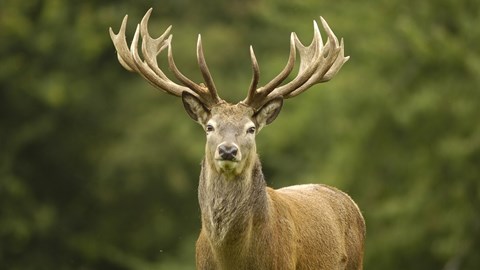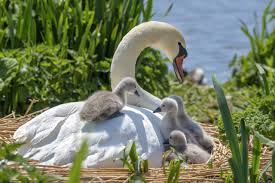Booklet Pane: Europa (C.E.P.T.) 2021 - Endangered Species (North Macedonia 2021)
Europa (C.E.P.T.) 2021 - Endangered Species (North Macedonia 2021)
11 May (North Macedonia ) within release Europa (C.E.P.T.) 2021 - Endangered Species goes into circulation Booklet Pane Europa (C.E.P.T.) 2021 - Endangered Species face value 4*50 North Macedonian denar
| Booklet Pane Europa (C.E.P.T.) 2021 - Endangered Species in catalogues | |
|---|---|
| Colnect codes: | Col: MK 2021-08MS |
Booklet Pane is square format.
Also in the issue Europa (C.E.P.T.) 2021 - Endangered Species:
- Stamp - Balkan Lynx (Lynx lynx balcanicus) face value 144;
- Stamp - Brown Bear (Ursus arctos) face value 50;
- Souvenir Sheet - Eurasian Eagle-Owl (Bubo bubo) face value 144;
- Stamp - Eurasian Eagle-Owl (Bubo bubo) face value 144;
- Booklet Pane - Europa (C.E.P.T.) 2021 - Endangered Species face value 4*50;
- Stamp - Grey Wolf (Canis lupus) face value 50;
- Stamp - Mute Swan (Cygnus olor) face value 50;
- Stamp - Roe Deer (Capreolus capreolus) face value 50;
- Booklet - Europa - Endangered National Widlife face value 4*50;
- Full Pane - Balkan Lynx (Lynx lynx balcanicus) face value 9*144;
Booklet Pane Europa (C.E.P.T.) 2021 - Endangered Species it reflects the thematic directions:
Animals are multicellular, eukaryotic organisms of the kingdom Animalia (also called Metazoa). All animals are motile, meaning they can move spontaneously and independently, at some point in their lives. Their body plan eventually becomes fixed as they develop, although some undergo a process of metamorphosis later on in their lives. All animals are heterotrophs: they must ingest other organisms or their products for sustenance.
Bears are carnivoran mammals of the family Ursidae (/ˈɜːrsɪdiː, -daɪ/). They are classified as caniforms, or doglike carnivorans. Although only eight species of bears are extant, they are widespread, appearing in a wide variety of habitats throughout most of the Northern Hemisphere and partially in the Southern Hemisphere. Bears are found on the continents of North America, South America, and Eurasia. Common characteristics of modern bears include large bodies with stocky legs, long snouts, small rounded ears, shaggy hair, plantigrade paws with five nonretractile claws, and short tails.
Birds (Aves), a subgroup of Reptiles, are the last living examples of Dinosaurs. They are a group of endothermic vertebrates, characterised by feathers, toothless beaked jaws, the laying of hard-shelled eggs, a high metabolic rate, a four-chambered heart, and a strong yet lightweight skeleton. Birds live worldwide and range in size from the 5 cm (2 in) bee hummingbird to the 2.75 m (9 ft) ostrich. They rank as the class of tetrapods with the most living species, at approximately ten thousand, with more than half of these being passerines, sometimes known as perching birds. Birds are the closest living relatives of crocodilians.
A deer (pl.: deer) or true deer is a hoofed ruminant ungulate of the family Cervidae. It is divided into subfamilies Cervinae (which includes, among others, muntjac, elk (wapiti), red deer, and fallow deer) and Capreolinae (which includes, among others reindeer (caribou), white-tailed deer, roe deer, and moose). Male deer of almost all species (except the water deer), as well as female reindeer, grow and shed new antlers each year. These antlers are bony extensions of the skull and are often used for combat between males.
Mammals are any vertebrates within the class Mammalia (/məˈmeɪli.ə/ from Latin mamma "breast"), a clade of endothermic amniotes distinguished from reptiles (including birds) by the possession of a neocortex (a region of the brain), hair, three middle ear bones and mammary glands. All female mammals nurse their young with milk, secreted from the mammary glands. Mammals include the largest animals on the planet, the great whales. The basic body type is a terrestrial quadruped, but some mammals are adapted for life at sea, in the air, in trees, underground or on two legs. The largest group of mammals, the placentals, have a placenta, which enables the feeding of the fetus during gestation. Mammals range in size from the 30–40 mm (1.2–1.6 in) bumblebee bat to the 30-meter (98 ft) blue whale. With the exception of the five species of monotreme (egg-laying mammals), all modern mammals give birth to live young. Most mammals, including the six most species-rich orders, belong to the placental group. The largest orders are the rodents, bats and Soricomorpha (shrews and allies). The next three biggest orders, depending on the biological classification scheme used, are the Primates (apes and monkeys), the Cetartiodactyla (whales and even-toed ungulates), and the Carnivora (cats, dogs, seals, and allies).
Swans are birds of the genus Cygnus within the family Anatidae. The swans' closest relatives include the geese and ducks. Swans are grouped with the closely related geese in the subfamily Anserinae where they form the tribe Cygnini. Sometimes, they are considered a distinct subfamily, Cygninae.






